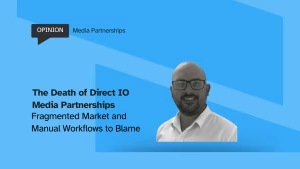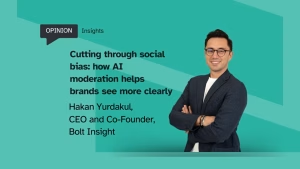By Victor Potrel, VP of Platform Partnerships at TheSoul Publishing
The way people consume content has shifted drastically. Technological advances have created a world where we are consuming content using various digital devices, wherever we may be through our phones, laptops, tablets, and even gaming consoles. More traditional channels where we have to tune in at a specific time to watch a program are fast becoming a thing of the past as we seek on-demand entertainment without needing to leave always-on social media and streaming platforms.
While streaming platforms have shown huge growth since 2020, the return to the outside world and rise of the cost-conscious consumer has prompted a slump. In the future, longer-form subscription-based entertainment platforms will need to diversify their offerings to compete with the lure of the vast range of digital content available across social channels.
What can streaming services learn from the likes of YouTube?
YouTube is the second most popular site on the internet behind Google. On mobile alone, YouTube reaches more adults during prime time than any cable network, and 3 in 4 adults report watching YouTube at home on mobile devices. Content creators on YouTube, TikTok, Instagram, and others are utilising these platforms to create engaging, content rivaling Hollywood shows in audience and fandom.
Online trends change fast, and the digital content creators’ key to staying ahead is creating relevant content to meet audience demand. This comes from advanced insights and analytics to read changes in viewers’ preferences in real-time, providing the power to adjust strategy quickly.
It would be unwise to underestimate how much successful content development comes from testing and learning. Some trends stick around, and some don’t. It is easier for social content creators to experiment with new formats and genres before fully committing to a production. Streaming platforms can benefit from this same approach by actively utilising social channels to test new ideas on how to better meet their audiences’ wishes. A long- and short-term approach helps balance out the need to combine feedback and learning with keeping audiences entertained right now.
Special effects and improved technology
While audiences want to benefit from the convenience and flexibility of accessing content anywhere, traditional platforms have historically had the edge when it comes to the latest special effects and production technology. However, as online digital content has grown in popularity, viewers have shown that what matters to them is the engagement and creativity that goes into content creation, not using the most expensive cameras and software.
Some of the best ideas come from simple hacks, such as shooting through a glass ceiling to get that bird’s eye view. And many social media platforms are building tools to create visual and audio effects via the user camera lens (like with AR), with great results. Traditional filmmaking skills are still vital, but so are new ways of thinking, which better reflect the quirks and trends capturing audience attention.
Shorter-form content
Short-form content has taken over the internet, with viewership numbers skyrocketing. These videos are usually under a minute and appeal to an audience who wants easily digestible entertainment. Gen Z, for example, has an attention span of just 8 seconds. But it’s not just about the attention span, shorter content allows a place to push traditional boundaries – entering a new, more fun, participative and creative environment. It is quicker to produce and easier to share, meaning content creators can hop on a trend as soon as it emerges, and further re-interpret it. This creates a positive loop of interaction and creation.
We’re already seeing the first streaming platforms starting to experiment in this area, and provide their users with some of the ingredients that make short-form content so popular.
One screen isn’t enough
Another trend we are seeing is the rise in the number of people simultaneously using multiple screens. In a recent survey, TheSoul found that 64% of British individuals regularly watch more than one simultaneously. This trend has increased significantly, up from 51% in 2020. There are many reasons for this, but a big one is that consumers are turning to social media to carry on conversations and engage with others with similar interests.
It is yet to see whether viewers’ preferences will consolidate to one type of consumption or another and this trend will continue. Providing multiple points of interaction and establishing an engaging social presence will ensure that entertainment providers hold attention across as many channels as possible, at once.
What does the future hold?
The current availability of watching experiences, as well as more cost-conscious consumers and increased competition, are creating a more challenging environment than ever for streaming services, which have enjoyed record subscription rates in recent years. While funding models differ, it’s clear that opening access to content beyond a paid subscription is an excellent way for streaming platforms to continue attracting new audiences.
With more time spent online than ever before, there is plenty of space for a range of entertainment experiences to co-exist. The connections between them will continue to develop, with all platforms developing and providing insights on how best to keep viewers engaged. Across the board, entertainment producers must be flexible, responsive to these demands, and open to collaboration to give their audiences what they need.









